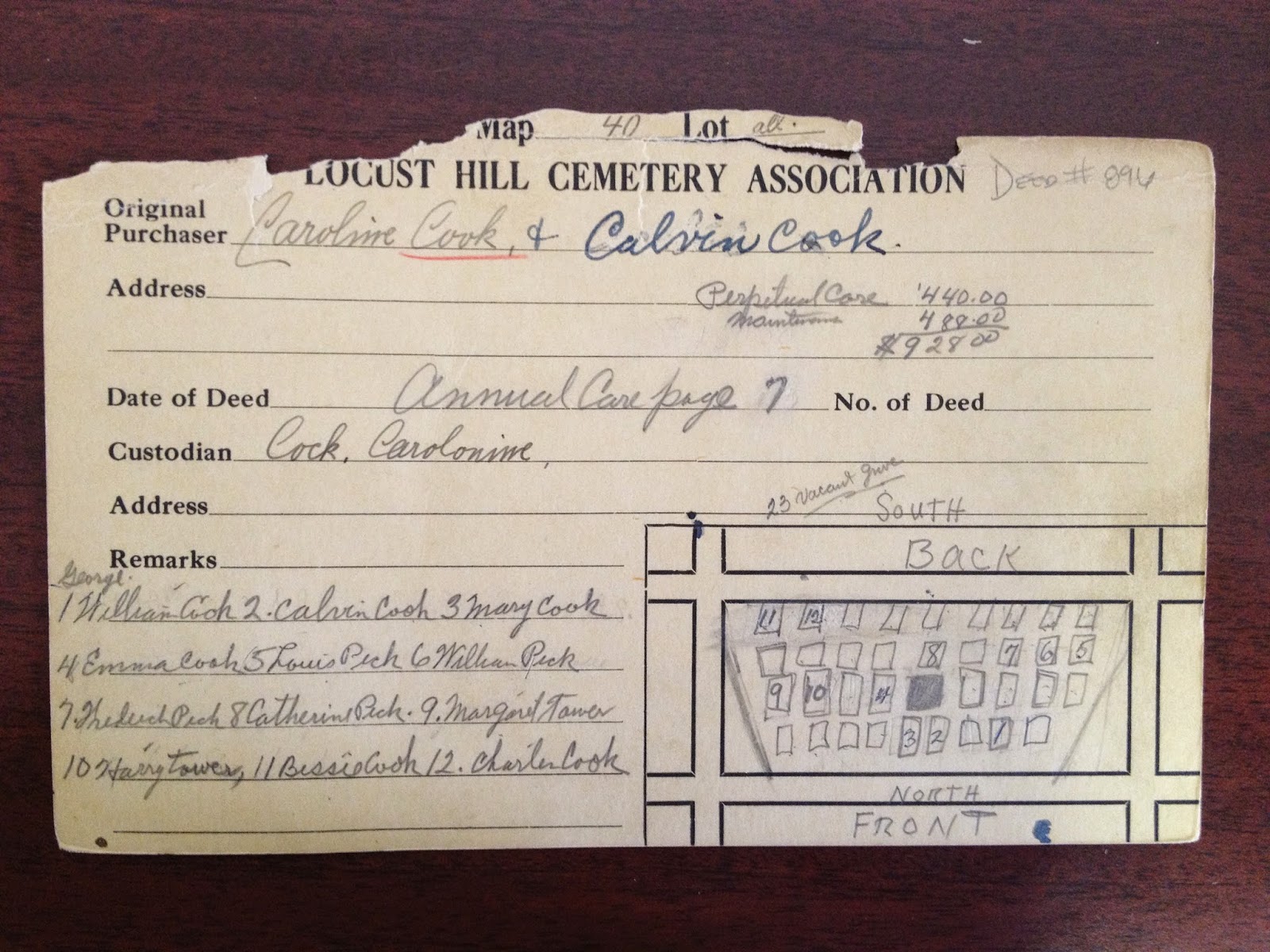Unlike the death certificate of his father, Charles' death record provided the name of the cemetery where he was buried, Locust Hill in Dover, Morris County, New Jersey. His father's record provided only the town of burial. I made several trips, inquiries, and searches until I found the relevant Cook grave in Dover.
 |
| Cook family plot at Locust Hill Cemetery in Dover, Morris County, New Jersey. Charles Cook (1859-1937) does not have a marker. |
When you look at a record, it is important to keep in mind which pieces of information are primary versus secondary. The date of death and location are primary, as the facts were recorded at the time of the event. The date and place of birth and names of spouse and parents are secondary sources.
Charles' date of birth is quite specific on his death record: October 22, 1857. Unlike most people born in the 1850s, Charles' birth in Denville, Morris County, New Jersey was recorded at the state level. Charles was born June 11, 1859. The birth record is a primary source for Charles' birthdate.
The 1860 federal census gives Charles Cook's age as 1 year. This is consistent with a birth in 1859. Ages skew in later census years.
The names of Charles Cook's parents are not consistent with other records. His father was Calvin Cook (1826-1889), not William. His mother was Mary Neil (1830-1898) or O'Neil, not Caroline. Charles' wife was Minnie Caroline Bishop (1866-1910).
As you gather documents, evaluate if you are looking at primary or secondary sources. Remember, though, that primary is not synonymous with absolute truth.




No comments:
Post a Comment